As soon as they bound through your front door, puppies are often eager to explore and examine every single part of your home. To help keep your puppy safe and secure as they sniff about, and to protect your furniture and possessions from puppy damage, it is important to prepare your home and yard before they arrive.
Below are some puppy-proofing tips and tricks that could help prevent your inquisitive and adventurous new family member from getting into trouble around your home:
1. If you don’t want to lose it, put it away
Puppies are typically curious and generally like to explore the world with their mouths. Anything you don’t want to be chewed should be put away or out of reach, such as shoes, kids’ toys or expensive furniture.
Smearing some Vicks VapoRub on items you can’t remove, such as doors or skirting boards, can also be a deterrent for some dogs due to its strong smell. However, Vicks can be poisonous for your pup if they do choose to lick it, so if you decide to use this trick make sure to supervise your little one while around the smeared furniture to see how they behave. If it appears the smell is not preventing your puppy from licking the Vicks then remove it straight away.
It may also be worthwhile keeping bathroom doors closed to prevent your pup from attacking your toilet paper or from getting into the toilet bowl.
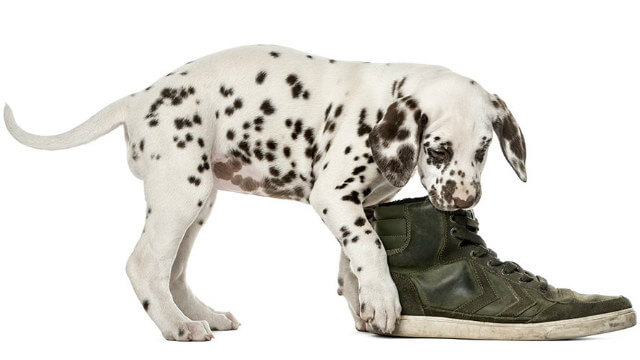
2. Go and no-go zones
Before your puppy arrives, discuss with your family what areas in your home will be ‘go’ and ‘no-go’ zones for your puppy. Decide if the puppy will be allowed inside the house, and if so, whether or not they can go into the kitchen, bedrooms, dining area or areas with carpets.
At first you may consider giving your puppy access only to a small part of your home until they are properly toilet trained and have grown out of the ‘chewing all things’ stage. It could be a good idea to block off no-go zones by closing doors or using baby gates.
If you want to allow your puppy access to the laundry or the garage, ensure these areas are puppy proofed as well, such as putting away any poisonous contents.
3. Keep dangerous objects and products out of reach
Check all areas that your puppy could reach and take steps to remove or block access to objects that could be dangerous for them. This includes all electrical cords or cables, sharp objects and poisonous substances like household cleaning products, medication and pest bait.
You may also want to consider putting away human food that could be within your puppy’s reach, as some foods can upset a puppy’s sensitive tummy (such as onions or grapes) or may even be toxic to them (such as chocolate).
4. Not all plants are good for your puppy
Some indoor and outdoor plants are toxic to puppies (such as lilies, sago palms, ivy and caladiums). Some may cause a mild stomach upset, while others can have a more serious effect. To be safe, it could be a good idea to keep any indoor plants out of reach so your little canine explorer cannot chew them. Your plants will thank you too.
It may also be a good idea to check your garden for plants that are toxic or that can cause skin irritations. Be careful using fertilisers, insecticides and rodent and insect poisons, which can be deadly to dogs. You may want to check with your vet if you’re unsure about whether a particular plant, fertiliser or other aspect of your garden could be poisonous for your puppy.
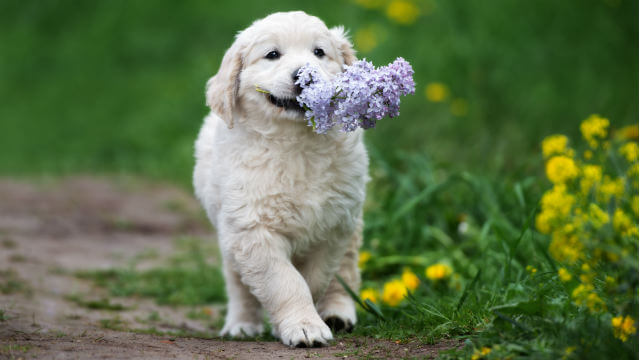
5. Don’t forget to puppy proof outside areas
Make sure the fencing around your property will adequately and safely contain your puppy, if they are allowed outside unsupervised or without a leash. Some puppies emulate Houdini and can climb up or jump over fences if they aren’t high enough, so make sure you check what height will be appropriate to keep your furry friend from escaping. You may also want to check the size of the gaps below and in between your fence palings to make sure your puppy can’t slip through or get its head stuck. This also goes for the railings on a balcony.
If you have a pool or pond, it’s also important to have these areas covered or fenced (fencing is a legal requirement for a pool in Australia) so your puppy can’t fall in. If you have to leave your puppy outside for a lengthy period of time (such as during the day while you’re at work), ensure there is sufficient shelter from the sun, rain and wind, and a protected spot to leave water.
6. Beware of stairs and heights
If your puppy is still young, you may want to prevent them from using large flights of stairs. High-impact exercise at a young age could be harmful for your puppy’s joints. Slippery surfaces can also be especially hazardous.
If your puppy needs to use the stairs, ensure there are no dangerous or overly large gaps that they could fall through. Puppies’ bones are fragile and they are often naturally clumsy, so accidents can lead to broken bones. To prevent this, it could be a good idea to teach your puppy how to get up and down stairs safely and slowly. The same applies to getting up and down from high places like couches.
7. Set up a safe space
A playpen or crate can provide a safe and comfortable space for your puppy to spend their time when you can’t be there to supervise. One way you could do this is by putting your puppy’s bed in a crate and attaching a playpen to it, so that your puppy has their own little room and courtyard.
Toys, water and a puppy pee pad can also be added to complete the setup to this safe zone.
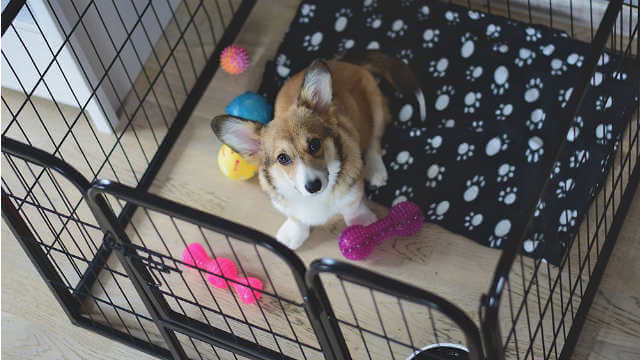
8. Keep your bin secured or hidden
The smells coming from a garbage bin can be quite tempting for puppies (and adult dogs too). Spoiled food, discarded toxic materials and sharp objects are just some of the risky items that can be found inside a household bin, and so it’s important to keep your bins out of reach from your pup. This may mean securing their lids or placing them in an area that your curious canine cannot get to.
Preparing your home and yard ahead of time and keeping a close eye on your pup once they arrive are just some of the ways you can help keep your bundle of fluff out of trouble. Another consideration is whether you would like to take out pet insurance to provide a level of financial protection, just in case your puppy needs treatment at the vet.
 About Kerstin Keimling
About Kerstin Keimling
Kerstin is the Digital Marketing Manager at Bow Wow Meow Pet Insurance, and is also a dog trainer and behaviourist. Kerstin owns her own dog training business called K9Fun.
Cover image source: New Africa (Shutterstock)


 About Kerstin Keimling
About Kerstin Keimling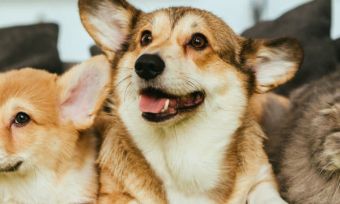
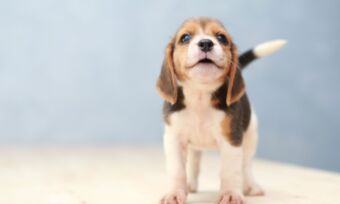


Share this article